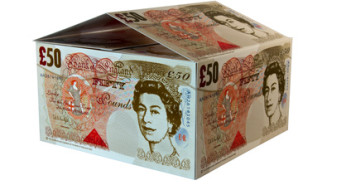GBP/USD slumped this week following the release of weaker-than-expected UK CPI inflation data. The index dropped from 1.9% to 1.6% year-on-year. As a slight fall to 1.8% was anticipated, this bigger-than-expected move saw the pound sold off, with cable dropping around 60 pips in the immediate aftermath.
The fall in clothing prices provided the largest contribution to the move. The accompanying Producer Price Input and Retail Price Index also fell short of market expectations. With dovish comments from BoE Governor Mark Carney earlier in the month, this fall in inflation will provide the MPC with even more reason to wait until Q1 2015 before tightening monetary policy.
The pound recovered on Wednesday morning, however, after MPC minutes showed that 2 members voted for a rise in UK interest rates at the last monetary policy meeting. Most MPC members found that there weren’t sufficient inflation pressures to justify hiking interest rates just yet; this argument is now firmly backed by Tuesday’s consumer price index data.
By Alex Edwards at UKForex, an international money transfer service
The majority of members also want to see more evidence of wage growth before raising rates, and so despite the surprise vote, the soft inflation data earlier in the week dampened the positive impact on the pound. It will also, no doubt, send a confusing message to investors, households and business owners as to when to expect the next rate rise. The inflation figures indicate that this could happen next year, but these recent minutes might suggest it could be before the New Year. GBP/USD popped to a high of 1.6665 on the back of the news, later settling lower as the morning went on and in advance of the FOMC minutes.
The minutes were a touch on the hawkish side, showing that FOMC members saw progress in the labour market – although there were some disagreements over the amount of slack here – and a more normal acceleration in the rate of inflation. Even though there is still no indication as to when exactly the Fed will consider raising interest rates, these minutes suggest the committee is at least getting a little closer to that point. It did, of course, provide a boost to the US dollar and GBP/USD slipped back below 1.66 – on to a low of 1.6565.
UK retail sales data was released on Thursday morning and showed that sales grew in July at a weaker pace than expected at 0.1%. Public sector borrowing data was also weaker than market forecasts. Come the afternoon, a series of US economic data printed stronger than expectations. Unemployment claims, Flash Manufacturing PMI, Philly Fed Manufacturing and Existing Home Sales all come in above consensus. Investors didn’t react overly positively to the news, however, as the Jackson Hole Symposium drew ever closer. That said, the USD did firm up a little against the pound specifically and GBP/USD drifted to a week low of 1.6570.
As for the euro, European manufacturing and services PMIs were a touch mixed this week. Overall, the data was a touch soft, and it saw EUR/USD fall to a low of 1.3255. The stronger-than-expected US data failed to lift the dollar vs. the euro; instead, investors sold the USD ahead of Yellen’s speech at Jackson Hole. There was a feeling that she would sound slightly dovish and thus undo the dollar-positive news from the FOMC minutes earlier in the week.
Next week’s focus will be on US and European economic data – there isn’t much out of the UK, and it’s a public holiday on Monday. German Prelim CPI and US Prelim GDP will be the two key data releases of the week. We suspect there may also be some follow-through from events at Jackson Hole this Friday.
Listen to the podcast here, focusing on the Fed:
Download it directly here.



